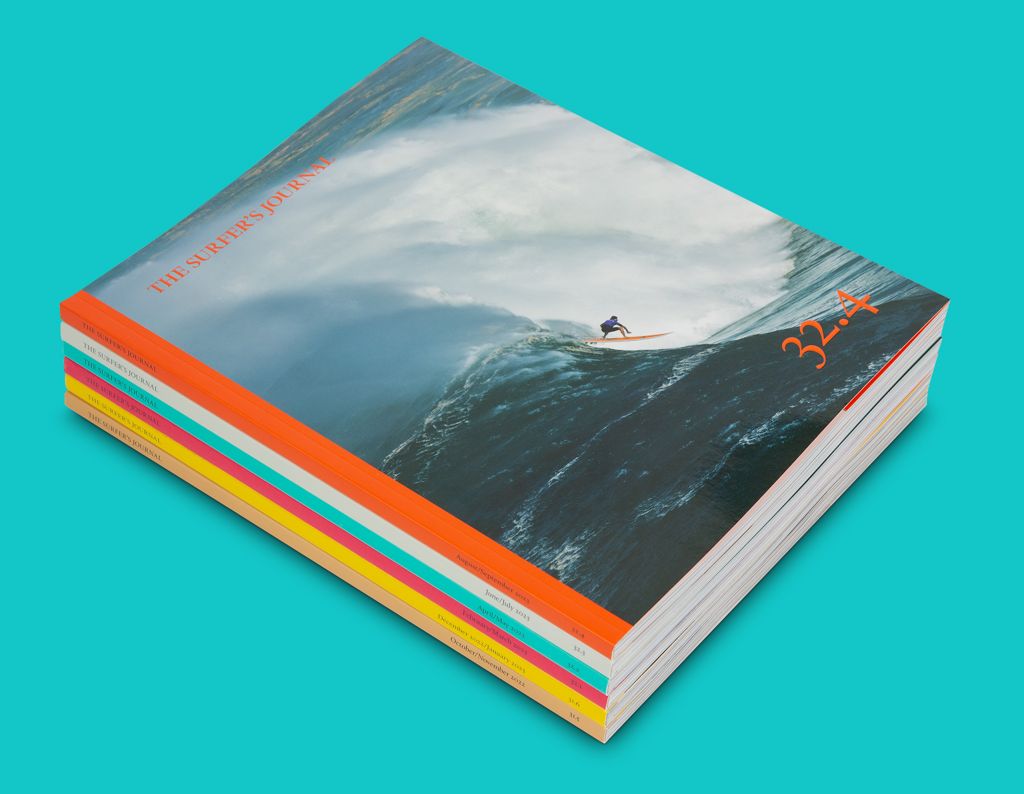I’ve always believed that our experiences inform the marks we make as individuals. Everything people do creatively, from surfing to making art, is connected to a momentum and reverence for flow that gives our lives a specific shape and rhythm. People often want to consider one person’s artistic practice in the context of another’s. But really, it’s our own life experiences that inform our creative decisions. I’ve been influenced by several artists, but nature, family, and music carry the weight of my practice.

“Both Sides, Now”
By Joni Mitchell
I recently had an exhibition at Pace in Los Angeles titled “Both Sides, Now,” after the Joni Mitchell song. I’m always trying to find an entry point for viewers into my work, and I wanted her lyrics to serve as a window into the visual world of the paintings. I remember sitting in my father’s office when I was little and hearing Mitchell for the first time. Even though I was young, her music felt profound. There’s something remarkable about how Mitchell sings “Both Sides, Now” throughout her life. In her twenties, her voice sounds airy and light. The song sounds completely different thirty years later, after having lived life to its fullest. The lyrics remain the same yet are sung with a different sort of magnitude.
I’ve looked at clouds from both sides now
From up and down and still somehow
It’s cloud illusions I recall
I really don’t know clouds at all
—Joni Mitchell, “Both Sides, Now,” 1966.
I try to let this song’s humble message guide my art practice; the idea that we’re all projecting and that all I can do in this life is dedicate myself to learning, loving, and studying what I love, hoping to get somewhere near the truth about it, all the while knowing that this can never be wholly achieved.
Alaska and Mexico
I was raised in Alaska and Mexico—two varied yet equally striking landscapes whose prominence in my upbringing remains central to my art. As a surfer and fisherman, I became attuned to various weather patterns and events specific to these places. My sense of rhythm or pace in a work is often inspired by a desire to intimate the measurements of waves or wind speed: one section might be marked by a knot of winds that feels like a storm, while another may feel airy and calm. This momentum recalls the stormy qualities of great landscape painters like J. M. W. Turner and Winslow Homer, whose work I’ve always admired. I felt a kinship with these painters because of our shared love of the ocean. Seeing their paintings in museums caused me to weep because of the exactitude with which they captured my emotional connection to the sea.
Ruth Asawa

Ruth Asawa is an extraordinary contemporary artist, both for how she lived and for her own craft. A steadfast advocate for arts education, Asawa was held at a Japanese internment camp as a child and started making art at a young age. She studied at Black Mountain College, where she honed her usage of everyday material. Asawa made these incredible wire-woven sculptures that emerged as visceral, celestial bodies. They allow the viewer to make affiliations very quickly by addressing their physical disposition in a similar fashion to the sculptures of Alexander Calder. I’ve also recently been captivated by Mark Rothko’s early work. I often try to explore emotion in my paintings, and Rothko’s particular sense of temperature, color, and devotion to capturing core emotions in his early paintings is powerful.

Tom and Marianne Manning

My parents have been two of my biggest influences. They’re art-teacher hippies who chose to live outside social convention. When I was little, they’d throw all five kids into a van and drive down to Mexico. We’d stay for years at a time, chasing waves up and down the coast of Baja. I started to gain new perspectives after bouncing around from place to place. My parents were invested in art from a teaching standpoint, so there was no sense of the burgeoning exclusivity in today’s art world. We were made to feel like we belonged. I often want my paintings to address viewers in such a way that they feel similarly welcome.
[Editor’s note: To read “Vast Spaces,” author Tristan McAllister’s profile of Kylie Manning, become a TSJ member by clicking here]
[Feature image: Kylie Manning, surfing in Mexico. Photo by Alex Patrick]











